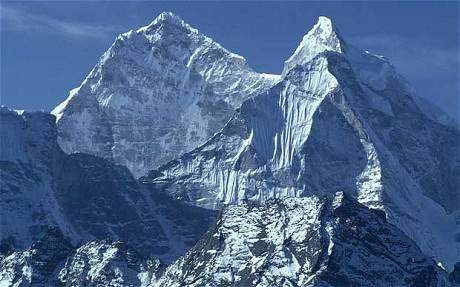News >> Environment
Everest shrunk by 2.5cm
 01 Jun, 2015
01 Jun, 2015
In 1840s, Andrew Waugh, the British Surveyor General of India found a peak in the eastern end of the Himalaya.
In 1852, Indian mathematician and surveyor Radhanath Sikdar calculated the peak`s height and it was discovered that it was higher than Kangchenjunga — world`s highest peak at that time. The mountain previously known as Peak XV was renamed Mount Everest in 1865 after Sir George Everest, British surveyor general of India from 1830 to 1843.
What is the height of Mount Everest?
The long accepted figure of the mountain`s height was 29,028 feet or 8,848 metres. This figure was calculated by Indian government`s 1952-54 survey.
Since then there have been several attempts to measure the mountain`s height. In 1975 Chinese surveyors calculated that the height was 8,848.11 metres.
Similarly an Italian survey using GPS and laser measurement yielded the figure of 8,846 metres by subtracting the height of the peak`s ice cap.
Until 1999 the value used by most researcher and mapping agencies was the figure established by the Indian survey. In 1999, a US team using satellite technology obtained a figure of 8,850 metres which today is the most accepted height of the peak. Analysis of satellite data after the recent earthquake in Nepal suggest that Everest might have shrunk by about 2.5cm.
When did the ascents start?
It is believed that Clinton Thomas Dent, president of the Alpine Club which is the world`s oldest mountaineering club was the first person to propose an ascent of Everest. In his 1885 book `Above the Snow Line` Dent wrote it was possible to climb the world`s highest peak. The first highly publicized attempt to climb the peak was done in 1924 when British mountaineers George Mollory and Andrew Irving attempted to scale Everest.
The expedition resulted in a disaster as they never returned. In 1999, Mallory`s body was found in the mountain. It is uncertain whether they managed to reach the peak. After 29 years Sir Edmund Hillary of New Zealand and Tenzing Norgay of India set foot on Everest on June 29, 1953. As of 2010 more than 5000 people have climbed the mountain.
What are the difficulties in climbing Mount Everest?
Climbing Mount Everest is the ultimate test of human limits- both physical and financial. The climb can take many days starting from the trekking to the base camp and then climbing up to three higher camps before the final summit attempt.
Because of the high altitude the oxygen content of air is one third of normal level. Lack of oxygen and extreme cold has adverse effects on human body.
Even simple calculation related to oxygen bottles and sense of direction becomes extremely complicated. The low temperature and unpredictable weather can cause frostbite leaving legs and hands useless. Blood becomes thicker and wounds take long time to heal.
The climbers are on their own because his/her teammates usually don`t have the strength to carry him/her down in case of accidents. There have been many incidents where people have ignored a frostbitten disoriented climber. The climbing rout has lots of dead bodies. Various websites of agencies that organize guided climbing show that summit attempt may cost above Rs 40 lakhs.
Why do many mountaineers criticize commercialization of Everest climbing?
Guided tourist companies assure they can take anyone to the top if they can bear the expense. This has increased the number of attempts as well as death tolls to climb the mountain. Several people have died in the attempts and their dead bodies are left on the peak. It has increased pollution on Everest which is now bursting with the leftover oxygen canisters, broken climbing equipment, human waste and dead bodies. Recently the president of Nepal Mountaineering Association, Ang Tshering warned about the pollution caused by human waste which has reached critical levels and threatens to spread disease on Everest.
Source: Times of India

